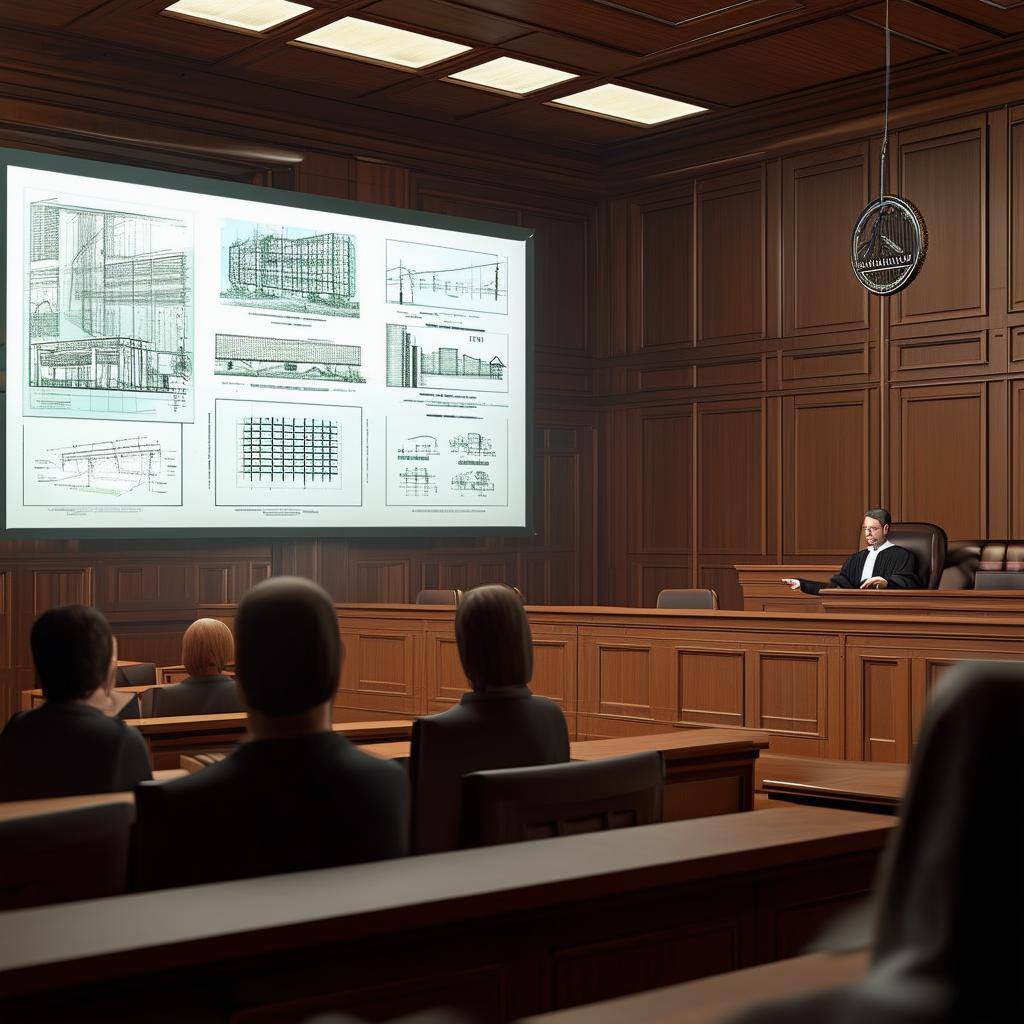In the courtroom, a picture can indeed be worth a thousand words. Trial graphics are revolutionizing the way jurors understand and retain complex information by transforming abstract concepts into tangible visuals. These graphics serve as powerful tools that break down intricate data into more digestible formats, making it easier for jurors to follow the narrative of a case. Whether it's through detailed charts, immersive 3D animations, or interactive timelines, trial graphics play a crucial role in bridging the gap between complicated evidence and juror comprehension, ultimately enhancing the overall effectiveness of legal presentations.
The Evolution of Trial Graphics in Modern Courtrooms
The use of trial graphics in courtrooms has evolved from simple chalkboard drawings to sophisticated digital presentations. In the early days, trial graphics were rudimentary, often consisting of basic sketches or hand-drawn diagrams on chalkboards or paper. These early trial graphics served the basic purpose of illustrating key points in a case, helping to clarify testimony and evidence for the jury. However, they were limited in scope and detail, often requiring significant explanation from attorneys to convey their full meaning.
With the advent of technology, the landscape has transformed dramatically. The introduction of computers and digital software has revolutionized the way trial graphics are created and presented. Today, trial graphics encompass a wide array of digital tools, including 3D animations that can recreate patented technology or accident scenarios with stunning realism, interactive timelines that allow jurors to explore the sequence of events in a case at their own pace, and detailed infographics that distill complex information into easily digestible visuals. These advancements not only make the information more accessible but also significantly enhance jurors' ability to understand and retain complex data. The use of high-definition screens and projectors in courtrooms further amplifies the impact of these visuals, ensuring that every juror can clearly see and comprehend the presented information. This technological evolution has made trial graphics an indispensable part of modern legal strategy, providing attorneys with powerful tools to effectively communicate their arguments and evidence.
Psychological Impact of Trial Graphics on Jury Decision-Making
Trial graphics significantly influence how jurors perceive and interpret evidence. Studies in cognitive psychology show that people are more likely to retain information presented visually rather than through text or verbal communication alone. This is because the human brain processes visual information much faster and more efficiently than text, allowing for quicker comprehension and longer retention. Visuals can engage multiple cognitive pathways, making the information more memorable and easier to recall during deliberations. For instance, when jurors are presented with a complex set of data in a visual format, such as a chart or graph, they can quickly grasp the relationships and trends within the data, which might take much longer to understand if presented in a textual format. Additionally, trial graphics can evoke emotional responses, which can further enhance memory retention and influence decision-making. For example, a compelling visual representation of anti-competitive markets or the sequence of events leading up to a contract breach can elicit empathy and a deeper emotional connection from jurors, thereby making the information more impactful and memorable.
Trial graphics also help clarify complex or technical information, making it easier for jurors to understand key points. This is especially crucial in cases involving intricate scientific data, detailed timelines, or technical jargon that might otherwise be difficult for a layperson to grasp. By breaking down these complexities into simpler, more digestible visual formats, attorneys can bridge the gap between expert testimony and juror understanding.
By using effective trial graphics, attorneys can ensure their arguments are heard, comprehended, and remembered, thereby increasing the likelihood of a favorable verdict. This strategic use of trial graphics can be the difference between a juror feeling overwhelmed by a case's complexity and feeling confident in their understanding of the evidence presented. Moreover, the use of high-quality, professionally designed visuals can lend an air of credibility and professionalism to the attorney's presentation, further persuading the jury of the case's merits.
What It's Like to Work With Persuadius to Create Trial Graphics
Working with a specialized firm like Persuadius can take your trial graphics to the next level. Persuadius offers a team of experts who are well-versed in both the legal and design aspects of trial graphics. We work closely with attorneys to understand the nuances of each case and develop custom visuals that effectively communicate key points to the jury.
From initial consultation to final presentation, Persuadius ensures that every graphic is meticulously crafted to enhance your case. Their expertise not only saves you time but also provides a significant strategic advantage in the courtroom. Learn more by downloading our book by clicking on the graphic below.
Other Persuadius articles and webinars devoted to persuading with trial graphics/litigation graphics:
- 7 Incontrovertible Rules for Trial Graphics
- Free Persuadius Webinar: 5 Ways to Maximize Persuasion During Opening Statements — Watch Anytime
- Litigation Graphics: A Game-Changer in the Courtroom
- The 12 Worst PowerPoint Mistakes Litigators Make
- Lawyer Delivers Excellent PowerPoint Presentation
- 7 Ways to Avoid Making Your PowerPoint Slides Your Handout
- 12 Ways to Eliminate "But I Need Everything On That PowerPoint Slide"
- 16 PowerPoint Litigation Graphics You Won't Believe Are PowerPoint
- The Redundancy Effect, PowerPoint and Legal Graphics
- The Effective Use of PowerPoint Presentation During Opening Statement
- Don't Use PowerPoint as a Crutch in Trial or Anywhere
- How Much Text on a PowerPoint Slide is Too Much?
- Do Professionally Designed PowerPoint Slides Get Better Results?
- Why Reading Your Litigation PowerPoint Slides Hurts Jurors






Leave a Comment